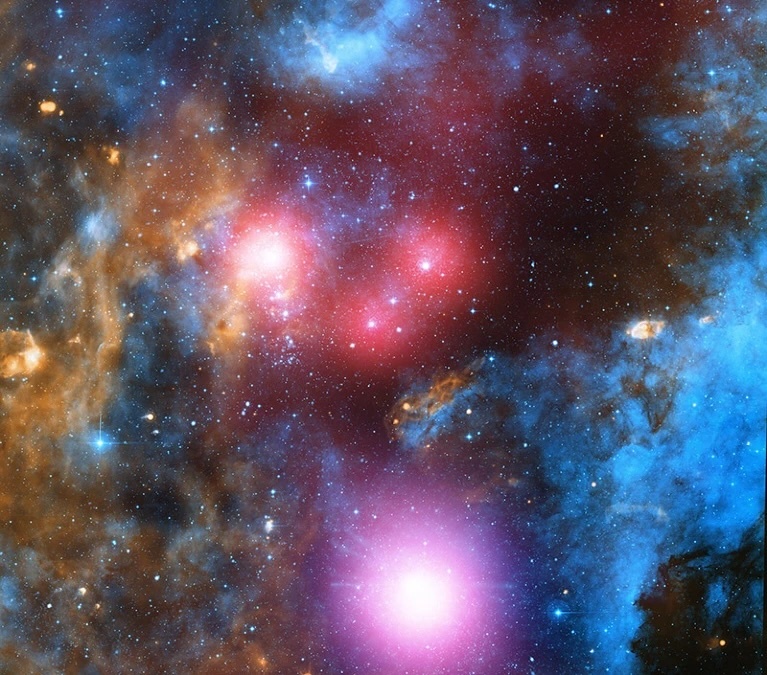27.02.2024
Scientists have identified a region in the Milky Way capable of accelerating particles to super-high energy levels.

Conditions in the star-forming region Cygnus OB2 are ideal for producing high-energy cosmic rays.Credit: X-ray: NASA/CXC/SAO/J. Drake et al; H-alpha: Univ. of Hertfordshire/INT/IPHAS; Infrared: NASA/JPL-Caltech/Spitzer
Astronomers have detected an enormous gamma-ray bubble that could be a source of the Milky Way’s most powerful cosmic rays — high-energy particles that rain down on Earth from space.
The turbocharged galactic accelerator — dubbed a ‘super PeVatron’ — is capable of blasting out cosmic rays at energies of at least 10 petaelectronvolts (PeV; 1016 electronvolts), pushing the upper limits of the energies such particles are thought to reach in the Milky Way.
The findings, published in Science Bulletin1, confirm that such high-energy sources exist in our galaxy. “We were looking for this kind of stuff for years,” says study co-author Zhen Cao, an astrophysicist at the Chinese Academy of Science’s Institute of High Energy Physics in Beijing. “Now we really see it.”
Cosmic rays are subatomic particles, often protons or atomic nuclei, that zip through space at nearly the speed of light. Those in the Milky Way are known to reach energies of at least a few PeV, but locating the sources of very-high-energy cosmic rays has been notoriously difficult. This is because cosmic rays bounce off magnetic fields as they whizz through space, which means that their flight paths are so convoluted that it is hard to work out their places of origin. To get around this problem, researchers measure gamma-ray photons — particles produced by the interaction of cosmic rays with interstellar gas. Gamma rays carry 10% of the energy of cosmic rays, and they travel in straight lines, making it easier to pinpoint potential cosmic-ray sources.
Cao and his colleagues used the Large High Altitude Air Shower Observatory (LHAASO) in Daocheng, China, to measure gamma rays coming from Cygnus OB2, a massive star-forming region in the Cygnus constellation.
The LHAASO team detected a huge gamma-ray-emitting structure, known as a bubble, that was emitting photons with energies higher than 1 PeV, with one measuring 2.5 PeV. This suggests that the area could be generating cosmic rays that reach energies of somewhere between 10 and 25 PeV at least, says Cao.
The hot, short-lived stars within Cygnus OB2 produce stellar winds that reach speeds of thousands of kilometres per second, says Cao. When these gusts collide with gas and other material that lies between stars, they create ideal conditions for accelerating cosmic rays to high energy levels.
The observations suggest that cosmic rays originating in the Milky Way can reach much higher energies than previously thought, says Gavin Rowell, an astroparticle physicist at the University of Adelaide in Australia. “The result is certainly very exciting,” he adds.
Next, Cao and his team will investigate Cygnus OB2 in finer detail to try to locate the precise source of the high-energy cosmic rays in the star cluster. They will also continue to hunt for other super accelerators in the Milky Way, says Cao.
Quelle: nature

